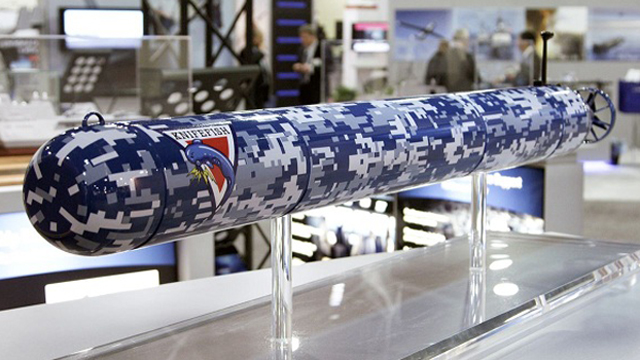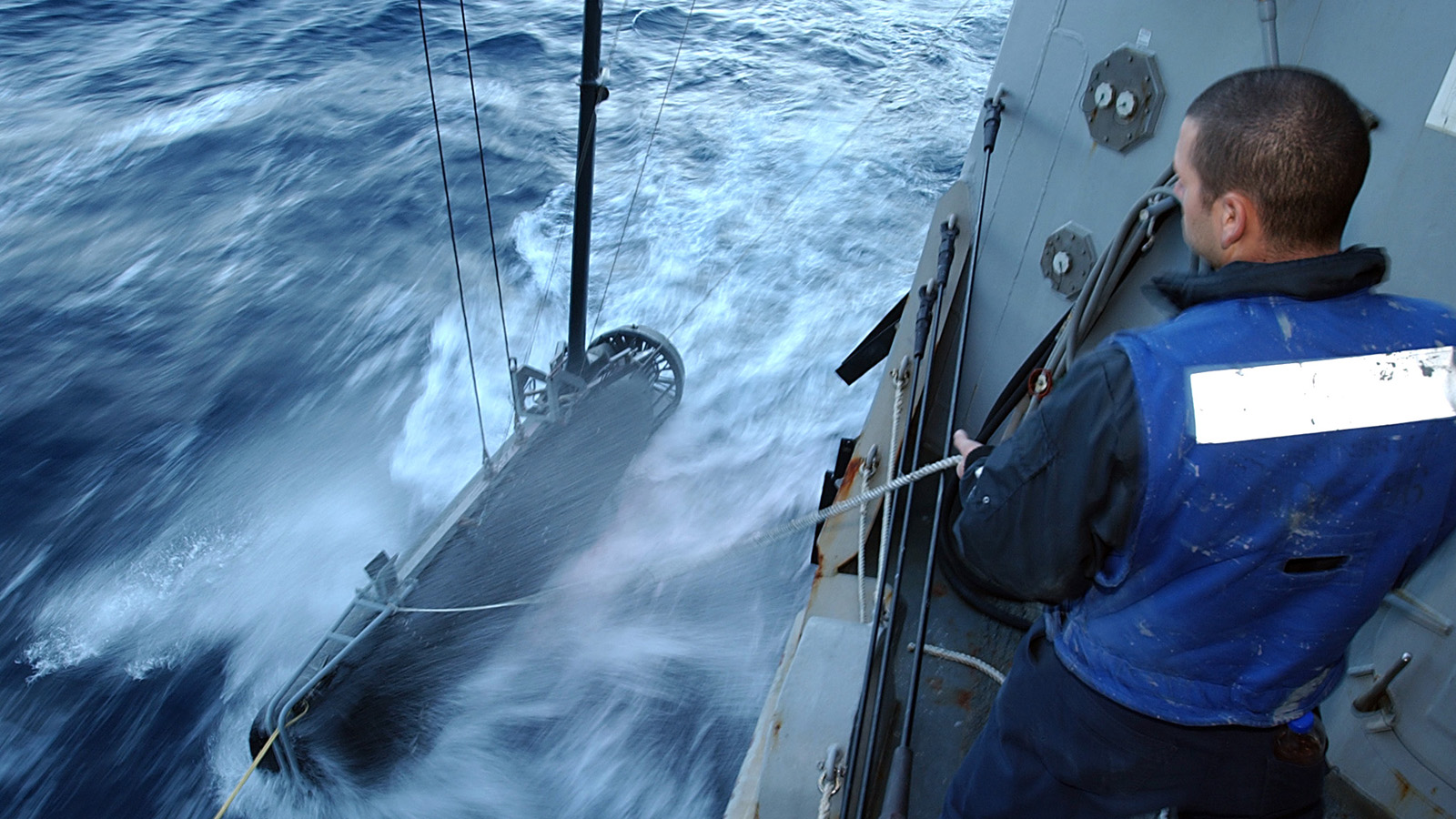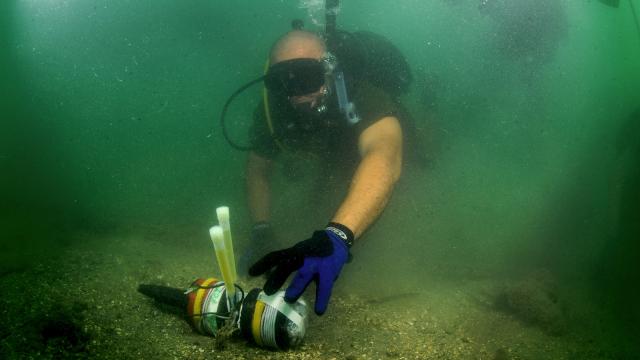You don’t joke about mining important maritime trade routes — Iran did and nearly started WWIII. And while America’s fleet of MH-53E Sea Dragons and Avenger-class mine countermeasures ships are still quite effective, they’re getting really, really old. Both platforms entered service in the mid-1980s and are quickly nearing their retirement dates. Here’s what the US Navy has in store for its future countermining operations.
The primary platform of the new countermining system is the Littoral Combat Ship (LCS), a near-shore multi-mission ship designed to hunt mines, track subs and engage enemies on the surface. Ignoring the fact that it currently has a bit of an issue with its combat readiness (read: it can’t actually find mines), the LCS is a capable host for the menagerie of modular countermining technologies Navy Research has dreamed up as part of the Mine Counter-Measures (MCM) Mission Package. Here are its other components.
The Unmanned Influence Sweep System (UISS)
“We have an Unmanned Influence Sweep System (UISS) which consists of a boat with no people on it with a magnetic and acoustic device that it tows, called the Unmanned Surface Sweep System (US3). Together, this will allow us to replace the MH-53 helicopters that we use today in the legacy fleet to do these kinds of mine sweeps,” Capt John Ailes, Mission Modules program manager of the Littoral Combat Ship (LCS) program told Defense Tech.

Rather than send the mine-susceptible LCS out into the middle of a suspected minefield, the combat ship will instead deploy the UISS to set off any mines present. The UISS accomplishes this by broadcasting the acoustic signature of much larger ships, which sets off the mines, using the US3. “This would be the first unmanned sweep system [for a] surface capability,” Navy Capt Duane Ashton told Wired.
The Bluefin Robotics Knifefish

But before the UISS can be deployed, however, sailors need to know what they’re up against, both in terms of quantity and type of mines. That job falls to the Knifefish, a small ROV prototype designed to seek out and identify subsurface mines, and the Remove Multi-Mission Vehicle (RMMV), a diesel-powered semi-submersible ROV equipped with a powerful sonar system. The Knifefish is an oblong-shaped, high-speed Unmanned Undersea Vehicle (UUV) that acts as the Hunter to the UISS’s Killer, providing a coordinate set for the surface drone to investiate. The US Navy has ordered a total of 52 UISS drones, one for each new LCS.
The Remove Multi-Mission Vehicle (RMM)

The RMMV, on the other hand is a $US12 million, 7m long, 6500kg semi-submersible ROV — in that the snorkel that delivers air to its diesel engine and antenna mast sticks out of the water — that tows the AN/AQS-20A mine-hunting sonar system and can can operate outside the line-of-sight of its LCS mothership. Two RMMVs can be deployed simultaneously from the LCS for especially treacherous waters and can either be remotely piloted or follow an automated search protocol.
The AN/AQS-20 “allows us to take the ships out of the mine field. The sonar can be lowered depending upon what depth you are searching,” Ailes explained. “Today when you want to go into a mine field, you take a wooden ship in there with people on there. Now, we can send these unmanned systems into the mine field.”
“Ping by ping you can see things.” Ailes continued. “You put the acoustic energy in and it comes back and you see a response in time and in amplitude –proportional to target strength or a measure of the cross-sectional energy. Different objects have different responses. We teach the operators what a mine looks like and it takes some training,”
The RMMV is in late stage development and the UISS and Knifefish are still being tested but given that the LCS has a hull that dissolves in seawater, the ONR will have its work cut out before we see these drones patrolling the shoreline. [Defense Tech, Navy, Wired, General Dynamics]
Pictures: Bluefin Robotics, US Navy
